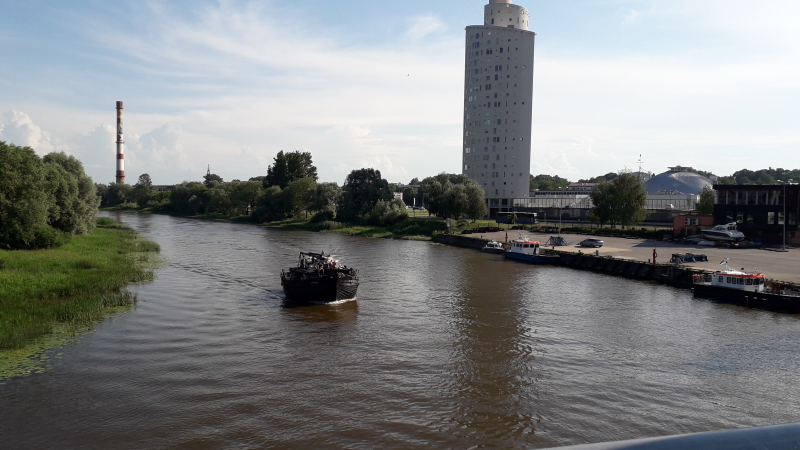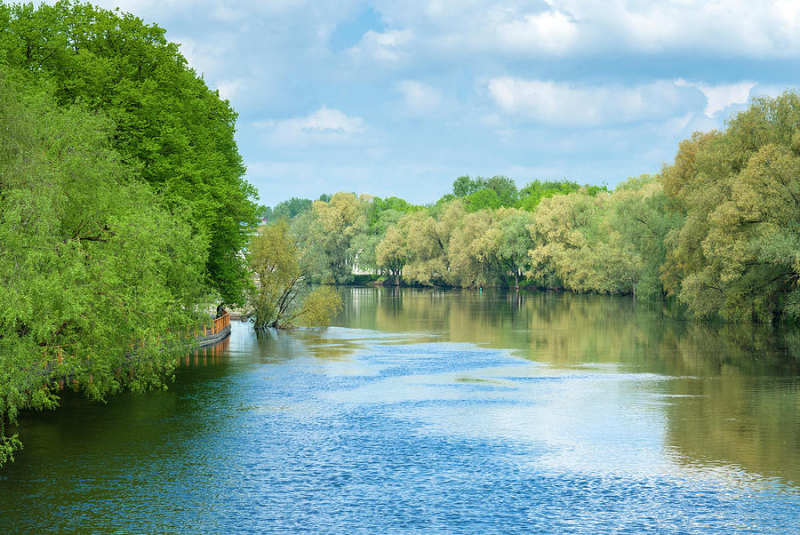Emajõgi

Emajõgi is an Estonian river that flows from Lake Võrtsjärv through Tartu County and into Lake Peipsi, passing through Tartu for 10 kilometers. It is 100 kilometers long.
The Emajõgi is also known as the Suur Emajõgi ("Great Emajõgi"), as opposed to the Väike Emajõgi ("Little Emajõgi"), another river that feeds into Lake Võrtsjärv's southern end. Emajõgi is Estonia's second largest river by discharge and the country's sole entirely navigable river.
The source of Emajõgi lies near Rannu-Jesuu, on the northeastern coast of Võrtsjärv, where the river flows roughly eastward towards Lake Peipsi.
The river flows through wide, flat, and marshy plains in the upper course, from Võrtsjärv to Kärevere bridge, which are part of the Alam-Pedja Nature Reserve. Emajõgi lacks a clearly defined floodplain in this heavily meandering portion — the flooded region can span several kilometers at times and has no distinct bounds. Emajõgi follows a straighter course in the middle section of its journey from Kärevere to Kavastu through Tartu, and runs in a clearly defined, shallow valley that is typically no more than 10 meters deep. The valley is 1–1.5 kilometers wide in the middle, narrowing to 800 meters in Tartu. The valley's narrowest section (400–600 m) occurs near Kavastu, at the end of the middle course. The river travels through a swampy lowland - Emajõe Suursoo – before draining into Lake Peipsi at Praaga in its lower course.
The river stretches over 100 kilometers (62 mi). Its length was measured as 117 kilometers in 1927. (73 mi). This might have changed in the 1930s, when the river's meandering upper channel was straightened to make navigation easier.
Length: 101 km (62 mi)











